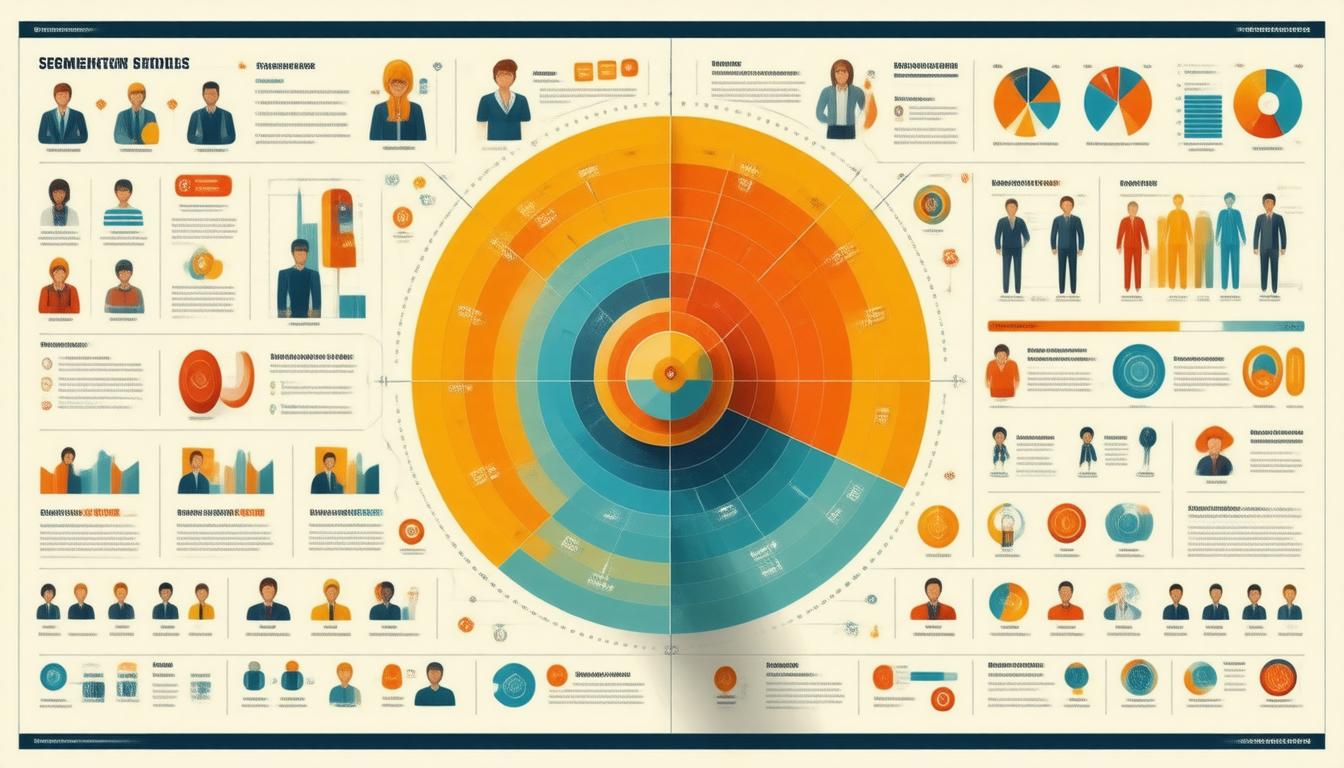In today’s fiercely competitive market, understanding your audience is crucial for creating personalized marketing strategies that drive engagement and conversions. Enter customer segmentation tools—innovative solutions designed to dissect customer data into meaningful segments, allowing businesses to tailor their marketing efforts effectively. 
What Are Customer Segmentation Tools?
Customer segmentation tools are specialized software applications that automate the process of dividing a customer base into distinct groups based on shared characteristics. These characteristics can range from demographic information and purchasing behaviors to psychographics and engagement levels. By analyzing vast amounts of customer data gathered from various channels, these tools assign customers to segments that help marketers implement targeted campaigns.
Why Use Customer Segmentation Tools?
-
Enhanced Understanding of Customers: Segmentation tools allow businesses to uncover intricate insights into customer preferences and behaviors. According to research, companies that focus on market segmentation are considerably more likely to grasp their customers’ challenges and intentions, enhancing overall marketing efficacy.
-
Personalized Marketing Campaigns: With a clearer picture of distinct audience groups, businesses can craft personalized messaging and offers. For instance, an eCommerce site may tailor its marketing strategies based on customers who frequently engage with certain content or products, leading to increases in conversion rates and customer satisfaction.
-
Efficiency and Scalability: As businesses grow, so does the volume of data. Manually sifting through this data is impractical. Segmentation tools automate the process, allowing marketers to assess segments efficiently, saving time and resources while delivering impactful solutions at scale.
Steps to Effective Market Segmentation
-
Define Your Target Market: Before using segmentation tools, it’s essential to define your ideal customer profile (ICP). This involves researching market demand, identifying potential customer groups, and analyzing how well your product meets their needs compared to competitors.
-
Conduct Cluster Analysis: This stage involves identifying key characteristics for segmentation, which can include demographic, geographic, behavioral, and firmographic criteria. Conducting detailed market research—through surveys, interviews, and user behavior analysis—can help delineate valuable segments.
-
Create and Manage Customer Segments: Once you’ve identified the relevant segments, organizing and managing these groups using a Customer Relationship Management (CRM) system becomes crucial. This allows for better tracking of customer interactions and more effective communication strategies.
-
Test and Optimize Marketing Strategies: After developing marketing campaigns targeted at specific segments, it’s critical to measure their success. Gathering feedback and assessing performance metrics will enable continuous optimization of your approach based on customer responses.
How to Choose the Right Segmentation Tool
When selecting customer segmentation tools, consider the following criteria:
-
Integration Capabilities: The ability of a tool to integrate with existing marketing systems (like CRM and analytics platforms) enhances its functionality and data accuracy.
-
Customization Options: Look for tools that allow you to define your segmentation criteria and customize models according to your specific business needs.
-
Performance Tracking: A great segmentation tool should offer analytics features to track segment performance over time, helping assess the effectiveness of marketing efforts.
-
User Experience Insights: Tools that analyze customer sentiment and behavior, such as heatmaps and session recordings, provide deeper insights into how your audience interacts with your product.
Leading Customer Segmentation Tools
-
Contentsquare: A comprehensive digital experience platform that excels in multi-faceted customer analysis. It enables behavioral, geographic, value-based, and technographic segmentation, providing actionable insights to refine marketing strategies.
-
Hotjar: This tool combines qualitative and quantitative approaches, allowing users to visualize data through heatmaps and user recordings. It supports advanced filtering to create tailored segments based on behavioral interactions.
-
Survicate: A survey software that focuses on collecting user feedback to aid segmentation. Its customization options and integration capabilities with major CRM platforms make it a reliable choice for businesses looking to understand customer preferences directly.
Conclusion
Investing in powerful customer segmentation tools is essential for businesses aiming to unlock their market potential and drive effective marketing strategies. By understanding different customer segments and leveraging the insights gained, companies can create impactful campaigns that resonate with their audience, ultimately leading to increased sales, customer satisfaction, and loyalty. As you consider your options, prioritize integration, customization, and performance tracking to ensure that the tool you choose aligns with your organizational goals and enhances your marketing efforts.
Do you want to take your career to the next step? Improve your earning potential? Grow your business? Let us show you what A.I. can do for you. Contact us today at [color=rgb(4, 53, 157)]office@fairbane.com.au[/color]. We serve every corner of the earth.

